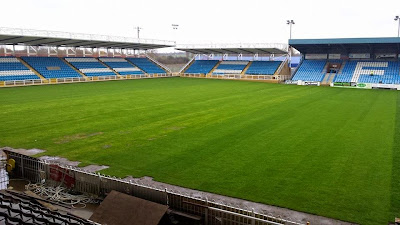With
Daryl Powell at the helm, the Rovers pack enjoyed some previously unseen
stability. The structure was simple. Strong running front-rowers up the middle,
wider running second rowers, mobile enough to run through gaps and cover
defensively inside the half-backs, and the midfield defence bolstered by a
bulky loose forward. He preferred a couple of no-nonsense workers for that role.
 |
| Matty Dale |
Matty Dale
first played for Featherstone on loan from Hull FC towards the end of the 2007
season. When he signed again full time two years later season he operated
mainly at second-row, with Tommy Haughey
sharing the loose forward role with Jamie
Field. Towards the end of that season, Iestyn
Harris also packed down at the back of the scrum. From then on though, loose forward was Matty’s
job and he moved inside to defend the middle third, and his place was settled
for the next three years. 2011 was our most successful season of the Daryl
Powell era, and part of that success was due to having a very settled pack.
Tony Tonks, Ben Kaye and Stuart Dickens were the unchanging front row. Jon Grayshon
and Tim Spears the second-rowers and Matty Dale at loose forward.
The following year, coach Powell experimented with more
distributors and ball handlers, so many times pivot Jonny Hepworth played at thirteen. We also saw youngster Jack Bussey get the occasional run, and
for the first time in his career Kyle Briggs
started at loose forward. On those occasions Dale moved into the second row.
The following season, Rovers went more for power than guile with Dale once again
at the back of a pack that included Steve Crossley, Kaye and Matt James, with James
Lockwood and Spears in the second row. A serious knee injury finished Matty’s
career after 166 Featherstone games and 54 tries.
 |
| Tim Spears |
Tim Spears’
career started at Castleford, before he found regular first team football at
Batley. He came to Featherstone at the same time as Matty Dale in 2009 and
spent six seasons offering sterling service as a willing runner and
indefatigable tackler in the second row. Dale’s departure created a gap at 13,
initially filled by James Lockwood,
then under Andy Hay and also Jon Sharp, it was increasingly Spears in that
position. He continued to play the same whole-hearted role, and was rewarded by
being made club captain for three seasons from 2014 to 2016. He left for York
at the end of the 2016 season after 201 first team appearances.




